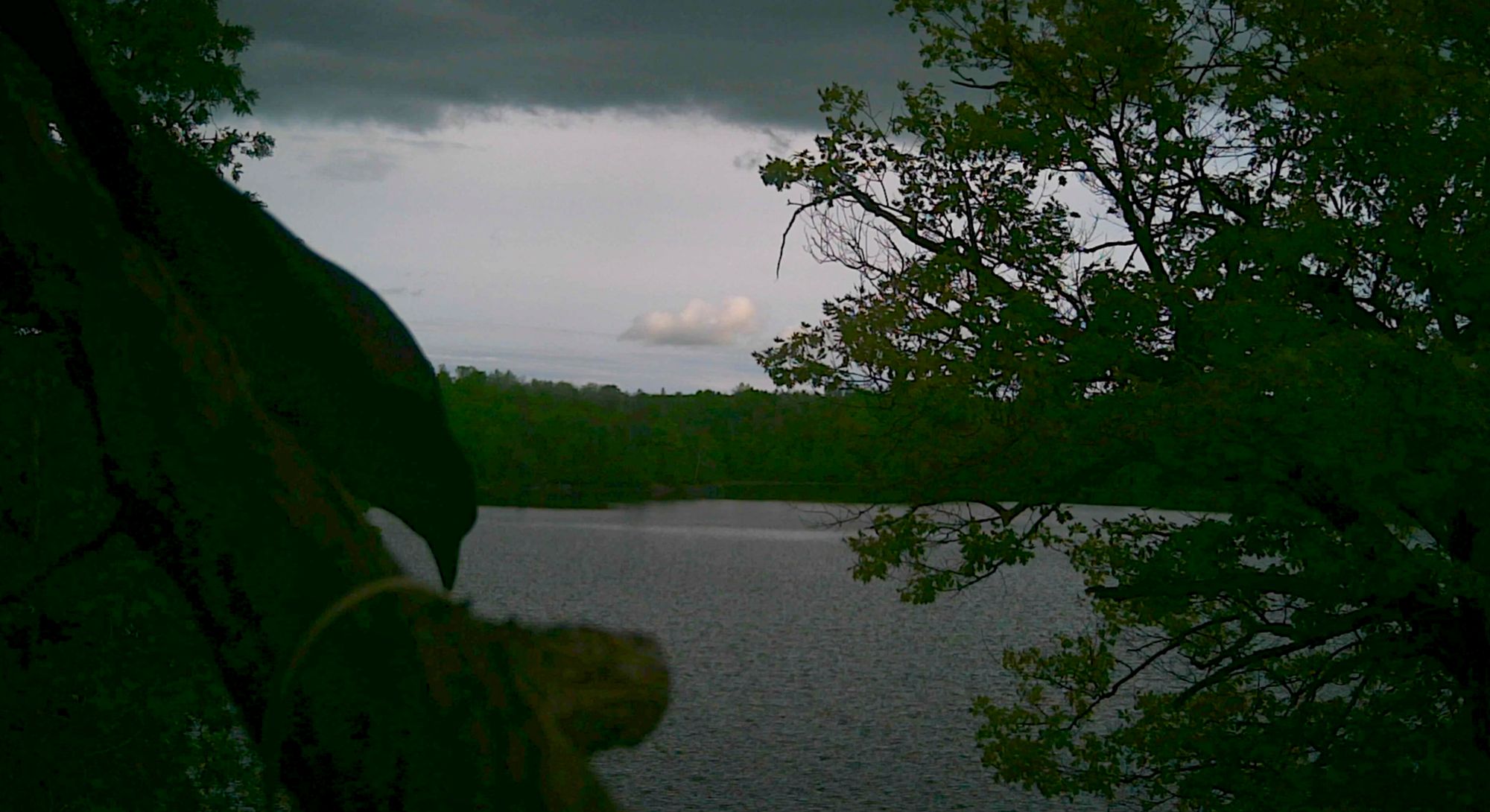
Spypoint Borblery
Oliver Husain
Screening Room hosts a changing program of live events, screenings, and performances
by contributors featured within the Collections as well as invited artists, speakers, and guest programmers.
this work contains flashing imagery
Oliver Husain: Spypoint Borblery, 2022. Livestream performance recorded at Mercer Union, Toronto on 10 December 2022.
A dark blue lake surrounded by green trees on the far shore. The camera is mid-air, perhaps in the canopy. Blocking the view of the lake are the branches of nearby trees. To the left, so close that it is blurry, is a branch where a shadowy bird sits. Superimposed on this image is white text that reads: about undesirable birds.
Spypoint Borblery is about undesirable birds. The performance unfolds in three short chapters:
1. The Advantage and Detriment of the Resurrection of the Turtledoves
EP Evans, The Criminal Prosecution and Capital Punishment of Animals, Appendix F, 1906. p 331.
Louis Armand de Lom d’Arce, Baron de Lahontan, New Voyages to North America, 1703. p 61
In a word we eat nothing but Water-fowl for fifteen Days; after which we refolv’d to declare War againft the Turtle-Doves, which are fo numerous in Canada that the Bifhop has been forc’d to excommunicate ‘em fooner than once, upon the account of the Damage they do to the Product of the Earth. With that view, we imbarqued and made towards a Meadow in which the Trees were cover’d with that fort of Fowl more than with Leaves: For just then ‘rwas the seafon in which they retire from the North Countries, and repair to the Southern Climates; and one would have thought that all the Turtle-Doves upon Earth had chofe to pafs thro’ this place. For the eighteen or twenty days that we ftay’d there I firmly believe that a thoufand Men might have fed upon ‘em heavily, without putting themfelves to any trouble.
—
2. In which we Identify a Deep House Sparrow
EP Evans, The Criminal Prosecution and Capital Punishment of Animals, Appendix E, 1906. p 311
Decree of Augustus, Duke of Saxony and Elector, commending the action of Pastor Greysser in putting the sparrows under ban, issued at Dresden in 1559.
Dear Getsener. Our dear devout paftor Greysser here, in his laft fermon, was very unsettled about the sparrowf because of their incesfant morose loud crying and annoying unchaftity, as they tend to do and prove during the fermon, to prevent God's word and Chriftian devotion. He put them under the spell. Becaufe we got the report that you purfue the small birdf in variouf sighted and cunning wayf and handlef—also use them to look for your food, among other things—it is therefore our graciouf requeft: that you may be rewarded for making known, how and in what way, by whatever meanf you deem fit, the sparrowf, when they are young, and multiply innumerable through their daily and incessant unchaftity, are chafed from the church of the Holy Crofs without special expensef. And may fuch annoying birdlery and vile chirping and shouting be withered in the houfe of God.
—
3. Dangers of Avian Poetry, Debunked.
Frank M Chapman, The European Starling as an American Citizen. Natural History, Volume XXV, Number 5, 1925. p 480
Having with thoughtlefs hofpitality accorded the starling, houfe sparrow, San José scale, gypfy moth and other pefts, including certain memberf of the genus Homo, free and unchallenged entry to our ports, we now ask (if to our forrow, we have not already learned), “Are they desirable?” So far af the starling is concerned the queftion is not to be anfwered in a word.
ACKNOWLEDGMENTS
Performance by Oliver Husain, in collaboration with artists Anni Spadafora, Adham Faramawy, Pony, and Richard Fung; music by special guest Marker Starling.
Produced with support from Bamboat | Mitchell and the Canada Council for the Arts.